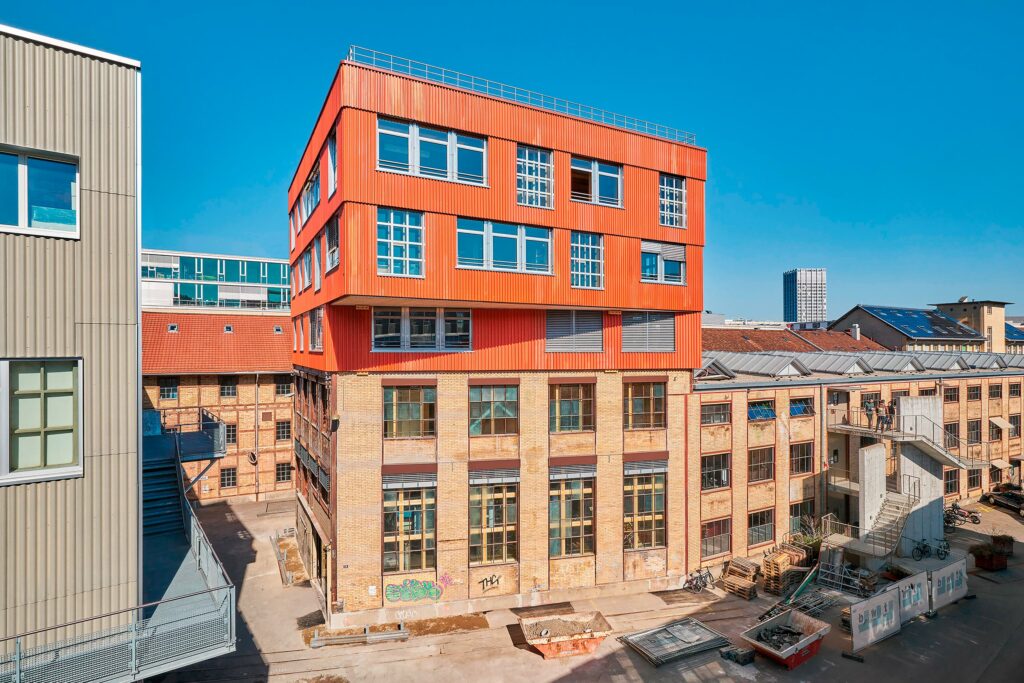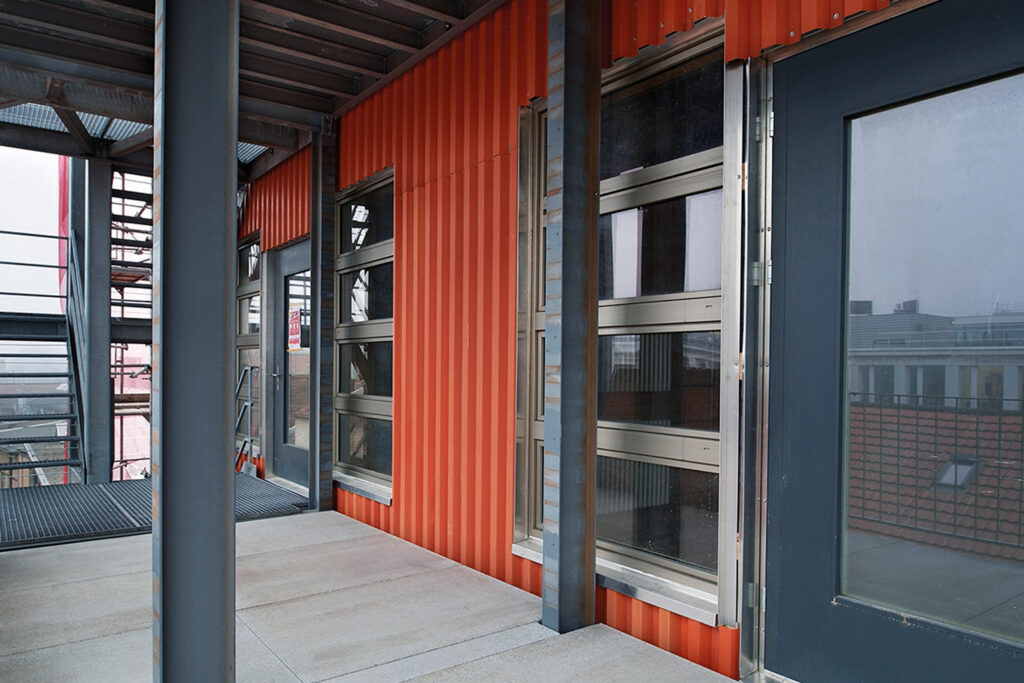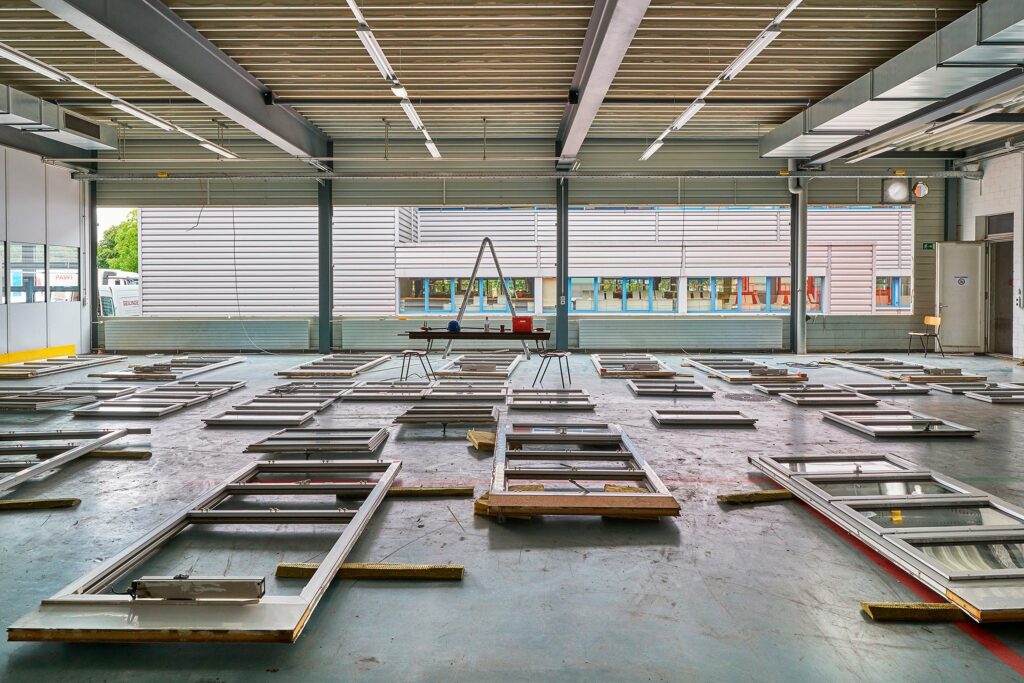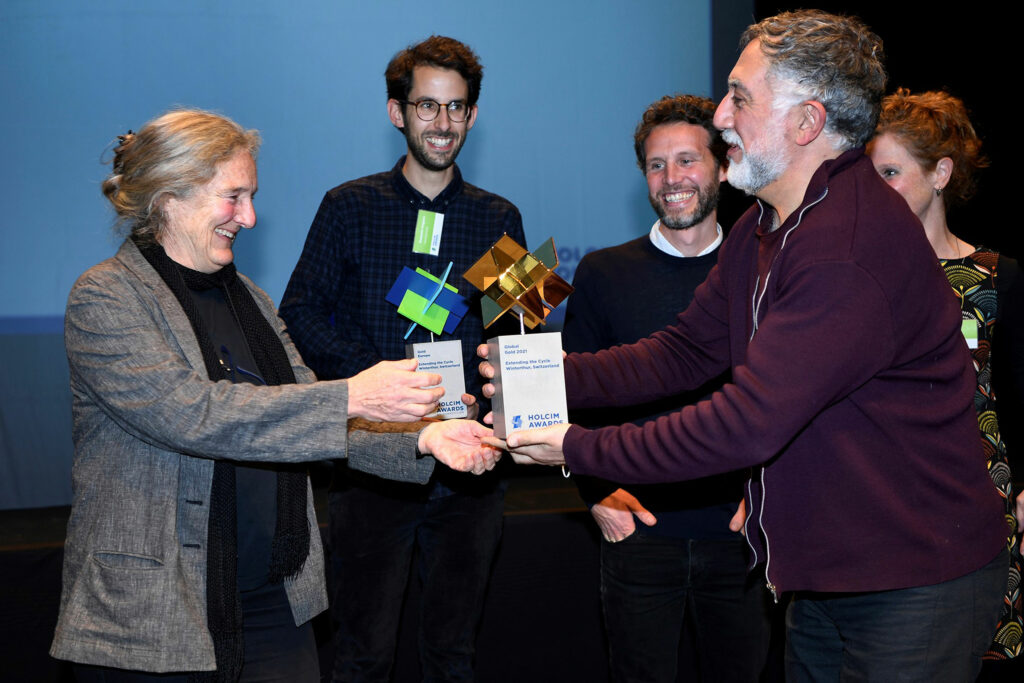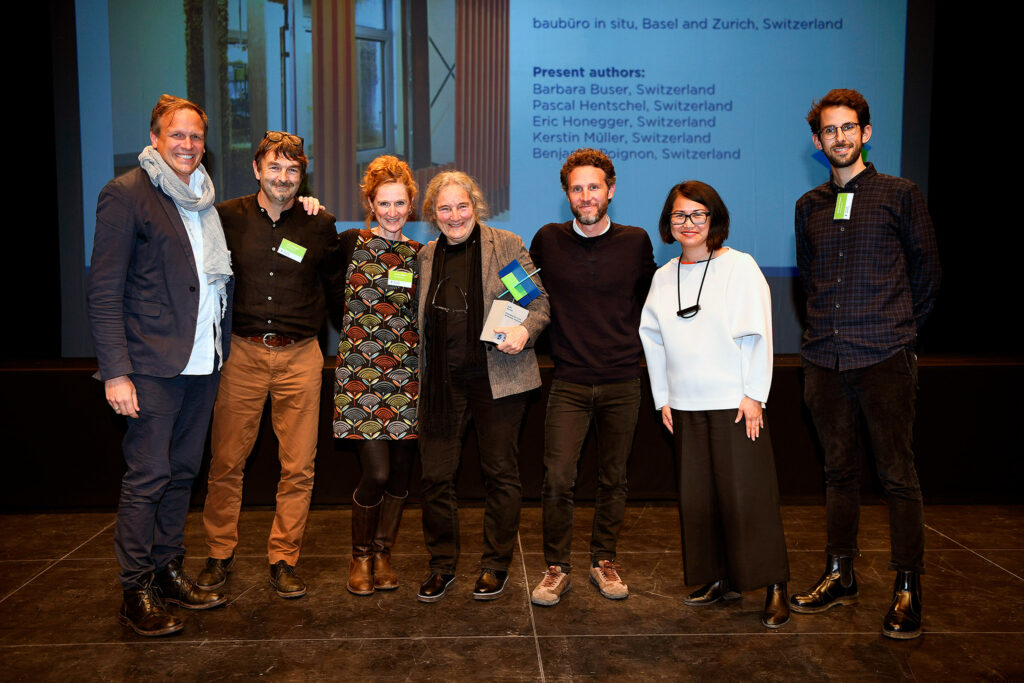Extending the Cycle in Switzerland
baubüro in situ double-awarded by the Holcim Foundation for Sustainable Construction
The project describes an extension in which the additional floors are designed in such a way that construction waste from other construction sites can be recycled. An industrial building in Winterthur, Switzerland is transformed to create 12 studio units. The planning process begins with the collection and classification of components from dismantling and demolition work and the identification of their recycling potential. An external steel staircase, aluminum windows, corrugated metal sheets, roof insulation and photovoltaic modules will be recovered from the former building and given a second life cycle. Steel girders will be reused for the new building, old stone facade cladding will be reused as floor tiles.
Outside View and Construction Phase of the Building © baubüro in situ
Where it was not possible to reuse the dismantled elements, the architects of baubüro in situ used natural materials such as wood for components, straw for thermal insulation and clay for the interior plaster. Recycling and using materials with a low environmental impact reduces the embedded carbon footprint by around 60% compared to conventional buildings. The construction is designed so that it can be easily dismantled in the future, and further recycled in the future. In order to maximize energy autonomy, solar systems are integrated on the roof to cover the company’s energy needs. The project team redefines the starting point of the design process: and turns demolition waste into new structural opportunities.
Inside Views of the Building © baubüro in situ
The jury of the Holcim Awards Europe assessed the project as a model for a paradigm shift in sustainable building due to its systematic design technique, which enables the direct reuse of construction elements and thus shows how the environmental impact of the construction sector can be dramatically reduced overall: From a very rational analysis of recyclable materials available on site to build the project starting from, and still be able to create a very original and surprising architectural expression. The building’s ability to be easily constructed and dismantled to enable future change and reuse was also highly praised by the Global Holcim Awards jury and recognized as a quality that the construction industry should increasingly focus on.
Handover of the Holcim Awards © Holcim Foundation
About the Holcim Foundation: The Foundation was created in 2003 to promote thought leadership on a greener, smarter, circular, and more inclusive built environment. It is an initiative of Holcim and expresses their commitment to accelerating our world’s transition to a net zero and inclusive future. The Foundation conducts the Holcim Awards for Sustainable Construction – the world’s most significant competition for sustainable design with total prize money per cycle of USD 2 million. The international competition showcases the important role that architecture, engineering, urban planning, and the building industry have in achieving a more sustainable future. The winners of the Holcim Awards for Sustainable Construction showcase the cutting edge of approaches to sustainable design, green architecture, and materials innovation. In the 6th cycle of the Holcim awards, the prizes were presented at a handover ceremony at the International Architecture Biennale in Venice, Italy.

